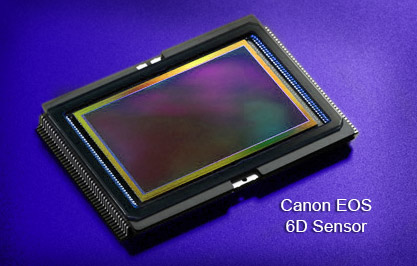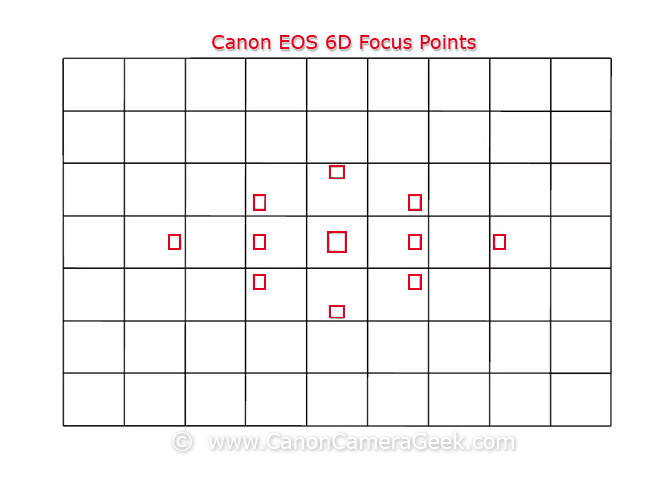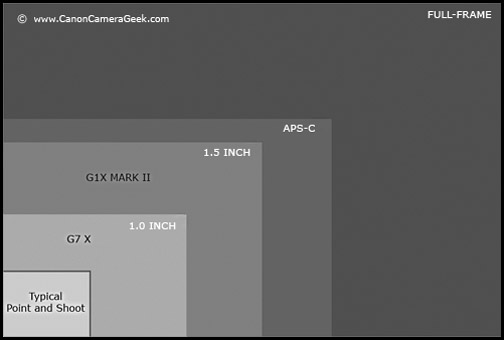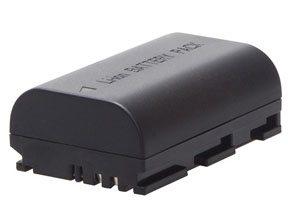Is The Canon EOS 6D Sensor Any Good?
WRITTEN BY: BRUCE LOVELACE
UPDATED: DECEMBER 5, 2023

THE CANON EOS 6D SENSOR IS STILL GOOD. The sensor that comes in the Canon EOS 6D perfectly bridged the gap that existed between APS-C "crop" sensors and "professional" Canon full-frame bodies.
The 6D sensor has a large enough pixel count to give you great detail in your photos, but not too many, which can increase the likelihood of seeing noise in your high ISO photography.
canon 6d sensor specs compared to 6D Mark II
CANON 6D VERSUS 6D Mark II SENSOR
CAMERA |
CANON EOS 6D |
CANON 6D MARK III |
| Total Pixels | 20.60 MP | 27.10 MP |
| Effective Pixels | 20.20 MP | 26.20 MP |
| Dimensions | 35.8 x 23.9 mm | 35.9 x 24.0 mm |
| Surface Area | 855.62 mm² | 861.60 mm² |
The introduction of the canon 6D was very significant. It is a great opportunity for photographers to enter the high-quality world of full-sized-sensor digital photography.
When the original 5D came out, I was thrilled to get a full sensor in a camera body that didn't come with the bulky size and price of the 1D series of Canon cameras.
Canon EOS 6D Sensor Bit Depth
One of the big benefits of the 14-bit conversion is that there is more color and brightness information in each RAW file.
For those techies that really want to know.
This little chart show the relationship between the bit depth and the number of shades of color represented.
A 14-bit conversion gives you 4 times as much information as a 12-bit.
Most original digital cameras only had 8 bits or only 256 shades of a color.
Bit Depth
2
4
8
10
12
14
# of Shades
4
16
64
256
1024
4096
In practical terms, more bit depth means smoother gradations and transitions within an image.
The results show most readily in photographs where there are solid areas that change in brightness, such as the gradation from light to dark in a beautiful blue sky.
It also shows up in portraits where the transition from bright highlights to shaded areas can be distracting.
Another important upgrade for the Canon 6D is the superior 11-point focusing grid. Even the Canon 5D Mark II only had a 9-point focusing grid.

how does the Canon 6d Sensor Size ComparE
The Canon EOS 6D has a full frame sensor. It is the same size as a 35mm film camera frame. You can see how much bigger a full-frame sensor of the 6D is compared to other popular formats. You can also see why I like my G1X Mark II so much.
Size matters and the G1X Mark II has a very large sensor for such a small compact camera body.

6D sensor cleaning

The large majority of any sensor cleaning you'll ever have to do with your EOS 6D is done for you, automatically, without your help, everytime you turn off the camera. Sensor cleaning is done by an ultrasonic vibration of the 6D sensor itself.
Although you can make it a DIY project and clean your sensor yourself, I think it's a better idea to have it cleaned professionally. If you take care when changing lens and avoid dusty and liquids, it's unlikely you'll ever have to clean your 6D sensor.
Canon 6D versus 6D Mark II sensor
The sensor in the original 6D is not the same sensor that was built into the 6D Mark II, which was released more than 4 years after the 6D. The 6D Mark II has 30% more pixels than the 6D (26 MP versus 20MP).
The 6D mark II sensor has a wider range of ISO sensitivity by 56% ( 100-40,000 versus 100-25,600), but both can be expanded to 102,400.
The pixel area 43.29µm2 vs 33.19µm2 of the Mark II is also 30% larger than the 6D Mark I.
6D sensor spec recap
- It's a healthy 20.2 MP Full-sized CMOS sensor.
- It's data is handled by a Digic 5+ processor.
- 14-Bit A/D Conversion (Analog to Digital)
The use of WiFi and GPS combined with the Digic 5+ processor of the 6D, and the handling all of the data produced by the big 6D sensor, create a need for extra battery power. It might be a good idea to have a Canon 6D battery grip added to your collection of accessories.
Have a blast. Shoot a Canon.


Bruce Lovelace is the publisher of Canon Camera Geek. Read more about him on the About Page. He also publishes how to articles and camera gear reviews at the Photography Tips website.
View some of Bruce's photos on Instagram and Flickr. Join the tribe of followers on YouTube. Bruce also runs photo workshops and provides 1 on 1 digital photography coaching.
Recent Articles
-
5 Best Canon Camera Types And Which One To Buy. Canon Camera Reviews
Mar 24, 25 01:21 PM
How do you know which is the best canon camera to buy? Don't get fooled.Read this first. -
Site Map of CanonCameraGeek Website. Articles about Canon Camera Gear
Mar 17, 25 09:47 AM
List of articles about Canon camera accessories and lenses. Site Map of Canon Camera Geek,list -
Using The Canon G1x Mark II And the Speedlite 270ex II-A Solid Combo
Mar 13, 25 07:05 AM
Should you use Canon G1x Mark II and the Speedlite 270EX II together? It's a compact system that can give you professional results. -
What's the RF 24-105mm Lens Good For. Guide on the Canon RF 24-105
Feb 26, 25 05:23 PM
It's one of Canon's most versatile all-purpose lenses, but specifically what is the RF 24-105mm lens good for. 11 recommended ways to use the RF 24-105. -
Canon R6 Mark II
Feb 20, 25 06:32 AM
what accessories and lenses do you recommend? Hi Mauricio, Thanks for your question. Good News! There are a ton of accessories for you to use with your
 Canon EOS 6D
Canon EOS 6D Canon EOS 6D Battery
Canon EOS 6D Battery






